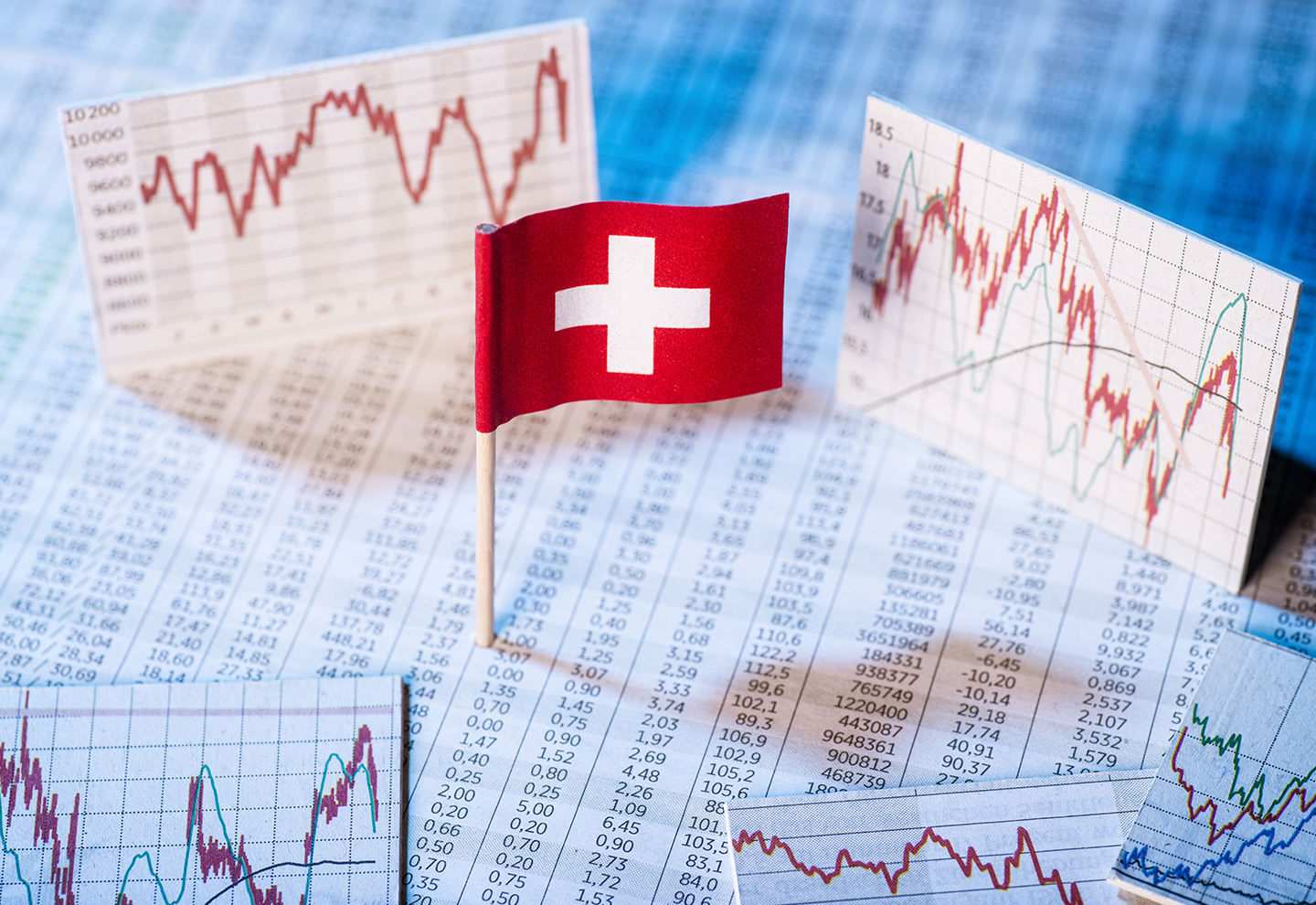A recession seems inevitable. Estimates by the Confederation at the beginning of the covid-19 crisis were that the Swiss GDP would contract by -1.3% in 2020. Of course the estimates do not take into account the latest developments (SECO’s forecast are as of March 19th), nor the good—but shy—plans coming from the Government and the Swiss National Bank to boost the economy.
As many have pointed out, the pervasive dynamics of this crisis are creating a vicious circle. A reduction in supply of goods and services because of the lockdown, is detrimental for the economy and reflected in the profitability of the corporate sector. The reduction in activity, in turn, has led to significant reductions in pay and jobs, creating a subsequent drop in demand. Alas, corporate profits decline even further given lower orders and purchases, which forces companies to default in en masse and unemployment to increase dramatically. The resulting decline in customer confidence exacerbates the depression since people prefer to postpone their purchases to later into the future, or cancel their purchases completely.
Moreover, a supply-demand crisis is expected to be followed by a sharp economic recovery once the actors of the economy have regained trust in their ability to survive, and hence consume. The only way to fully capture this recovery is to right now preserve the foundations of the economy, protect all of its layers and avoid the loss of experience, skills and know-how which would be the unfortunate result of a massive unemployment situation.
We think that the earlier we stop this downhill spiral, the better. Our estimates suggest that, faced with lack of immediate and sizable action and lack of fiscal stimulus, the Swiss economy could shrink by 20% under a series of simple assumptions.
Let’s start with salaries. The first component in a country’s GDP is consumption expenditure, and it is largely (but not only) determined by household consumption, which in turn is a direct function of salaries. While some sectors of the Swiss economy will remain unaffected (agriculture, telecommunications, food distribution, healthcare), there will be a severe fall in activity in construction, transport, tourism, education, and retail, to name a few. Certainly, in some of these sectors teleworking has picked up in the recent years and is helping preventing a sudden stop. Survey data from the Swiss Statistical Office for 2018 provides evidence on the prevalence of remote working by sector. In the financial sector, for instance, 18% of companies report that they practice teleworking occasionally, while 10% and 3% of companies use it regularly and often, respectively. Taking into account the average salary levels by sector, by 2018 only 6% of the Swiss salary mass is generated from home. Clearly companies are ramping up their use of remote technologies since the outbreak of the pandemic. Let us consequently assume that 15% of all salaries can be generated remotely.
Our assumption on the reduction of activity at the peak of the covid-19 crisis takes into account the specificity of each sector and its dependence on social interaction and the need for confinement. The International Labor Organization has just published a report that provides us with impacts of covid-19 on the different sectors, which we use in our assumptions. Financial services, for instance, should operate at 80% or normal activity, while tourism will be almost paralyzed (see Table 1). Taking into account the teleworking possibilities described above, and applying such activity rates to the average salaries of each sector, the salary income available to the Swiss active population, absent any government intervention, would be 40% lower in a month like April. We also (optimistically) assume that, as the impact of the pandemic declines economic activities return to normal (with the caveats below), and salary will return to their previous levels by the end of the year.
We can make additional assumptions looking at past data. For example, data from the Swiss Economic Institute (KOF) collected by Datastream/Refinitiv show that in 2009 and 2010 the number of bankruptcies in Switzerland grew by 24% and 20% respectively, reaching a peak of 6,841 companies filing for insolvency in 2012. We observed similar pattern in the United States after the 2008 financial crisis, despite government’s intervention to support businesses. In our opinion, a conservative approach would indicate that in 2020, there will be an increase of 30% in the number of defaults (that is, about 9,000 of the almost 600,000 Swiss companies, or 3,000 more defaults that in the 2012 peak). The number could be even higher, as the last decade has seen a significant increase of start-ups which are the new way of perpetuating the Swiss tradition of innovation. Without immediate and focused intervention, many of these start-ups won’t survive. Switzerland would lose a deep source of creativity and its growing reputation of being the European nest of young entrepreneurs. Innovation, in any case, would be the big victim of a deep recession, whatever the level (from multinational company to start-up) it is being generated from.
What is the impact of bankruptcies on GDP? The direct effect is through salary losses, and therefore household consumption. But a 30% increase in bankruptcies also impacts the rate of Gross Capital Formation in the country (that is, the value of new fixed assets and software in the different economic sectors). This is another important component of a country’s GDP.
A simple econometric analysis of the relationship between investment in fixed assets and defaults yields a negative impact in 2020 of -4%. Adding to that the dramatic impact of the pandemic on the construction sector, we estimate that Gross Capital Formation in Switzerland will, at the peak of the pandemic, fall by 30%, and recover gradually only by the end of the year (this being a very cautious estimate).

Besides government consumption, the final component of the Swiss GDP is the foreign sector. Here we make a last assumption. A recession impacts both exports and imports, and since Switzerland is a net exporter, the question is which side is affected the most. In the 2008 crisis, official data shows that Swiss imports drop by 10% and exports fell by 14%. We agree with Credit Suisse that, given that Swiss exports are concentrated in the healthcare and pharmaceutical sectors, as well as in consumer goods, the exports of Swiss companies should decline by a smaller margin this year, which we estimate to be 10%. Overall, and because of Swiss trade surplus, this means that, at the peak of the pandemic, the contribution of the foreign sector to the Swiss GDP could fall by 10%.

To summarize—this crisis will cost Switzerland 22% of its salary mass and disposable income by the end of 2020. It will reduce investment by 30%. It will reduce our trade surplus by 10%. With no increases in public spending, what is the overall impact on GDP?
In the absence of any government intervention, Swiss GDP should drop by 18.8% in 2020. If Swiss GDP was CHF698bn in 2019, we expect it to fall to CHF567bn by the end of 2020. The biggest drop will happen in the second (a 28% contraction from the same quarter last year) and third quarters (-21.3%), with a partial recovery in the last quarter (-11.1%). This is in addition to an estimated drop in GDP of 11.7% in the first quarter of 2020, relative to the first quarter of 2019 (see Figure 1).
The already implemented stimulus plan worth 6% of GDP is certainly helping. But in our estimates it would not prevent a recession in 2020 with a fall in GDP of no less than 10%. The reason is that, for the most part, the CHF33bn program consists of guaranteed loans to SMEs, which would only delay the problem and weaken their balance sheets (see below).
In other words—for Switzerland to fulfill the Confederation estimates of a meager drop of -1.3% in GDP, the public sector should contribute CHF205bn, or 17.5 of GDP. This is similar to our recommendation in our previous article (“A call for action to Switzerland’s economic decision-makers”, March 2020) where we proposed the Confederation to inject 25% of GDP through an aggressive fiscal stimulus plan.
We are not suggesting that the CHF 200Bn should all be injected through helicopter money into the Swiss economy. The public spending multiplier would be at play, and by compensating reductions in disposable income, helping companies preserving the health of their balance sheets and therefore allowing them to keep on selling here and abroad, certainly spending a lesser amount would be enough. The private sector would build on this help to take it further and allow the balance of the 200Bn to be invested in our other suggested support measures.
However, we want to emphasize now the urgency of the matter. Our growth estimates are conservative (not worst-case scenario) and based on simple assumptions, and do not consider the amplifying effects that a lack of immediate and massive action, could have now. Those amplifying effects would include:
- A drastic reduction in tax income for the Confederation in 2021 coming for the significant drop in individuals’ disposable income and in corporate profits, which would jeopardize implementation of public policy when it becomes most needed.
- While we assume in our estimates that salaries and economic activity will return to their 2019 levels by the end of this year, we are not considering the impact that zombie companies (those with current high debt levels and low cash holdings) would have on output, productivity, and employment. For these companies, the loan guarantees program implemented by the federal government in March will only postpone their suffering. Their balance sheet will look even worse, as all the assistance comes under the form of debt. These companies require direct assistance, not loans.
- The sudden drop in disposable income for Swiss employees could further depress consumption in 2020 and 2021, when and if the Swiss population tries to restore its depleted saving levels to the pre-crisis period.
- We are making the naive assumption that gross capital formation can be re-started to its pre-crisis levels in no time. This is an optimistic assumption, since investments in fixed assets—especially by the private sector, are planned and implemented with a certain delay.
Instead, we call for a fast, aggressive, one-off plan now to (i) to guarantee the salaries for a few months, so that nobody loses employment, and companies keep the know-how accumulated by investing in their employees; (ii) provide support allowing companies to continue investing in fixed assets, satisfy their current debt payments and maintain their balance sheet ratios and liquidity buffers so they can restart operations when the confinement is over; and (iii) most importantly, provide the Swiss population with the confidence in the future that will break the pervasive supply-demand-supply-demand dynamics that we have described above.
The strategy we recommend is not one which many countries in the world can afford. As we developed in our first article, Switzerland has a budget surplus tradition and a debt to GDP level which gives the country an incomparable competitive edge. If we capture this opportunity through immediate and massive support to our economy, Switzerland will emerge from this crisis as a solid, innovative and competitive leader, in a global economy where rebuilding the foundations is going to take a longer time. The cost of protecting our foundations and gain the competitive edge will not be higher than a “Marshall Plan” to rebuild our economy from the damages of the Covid-19 crisis. And it will have a much quicker payback.







